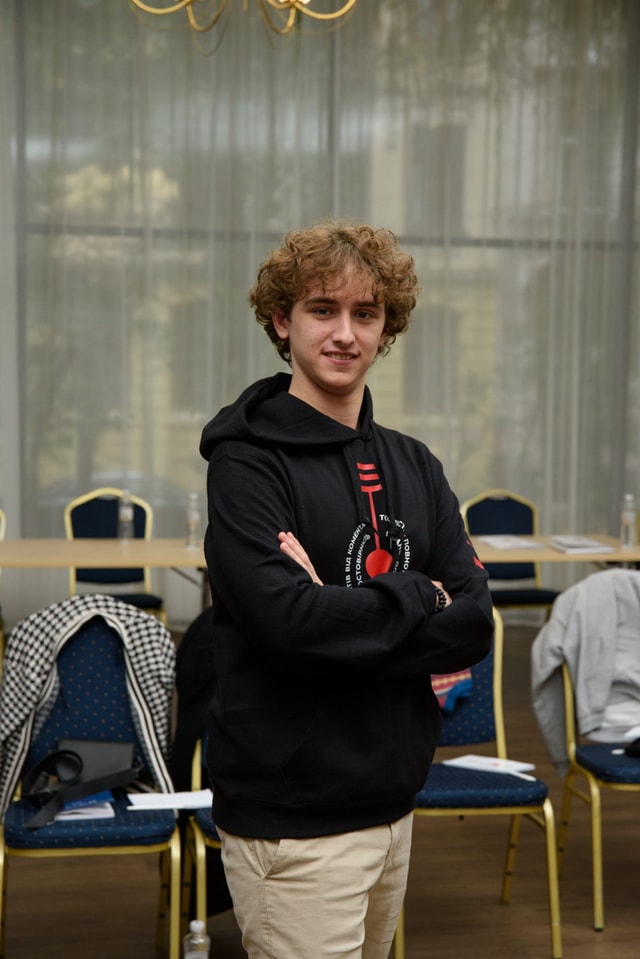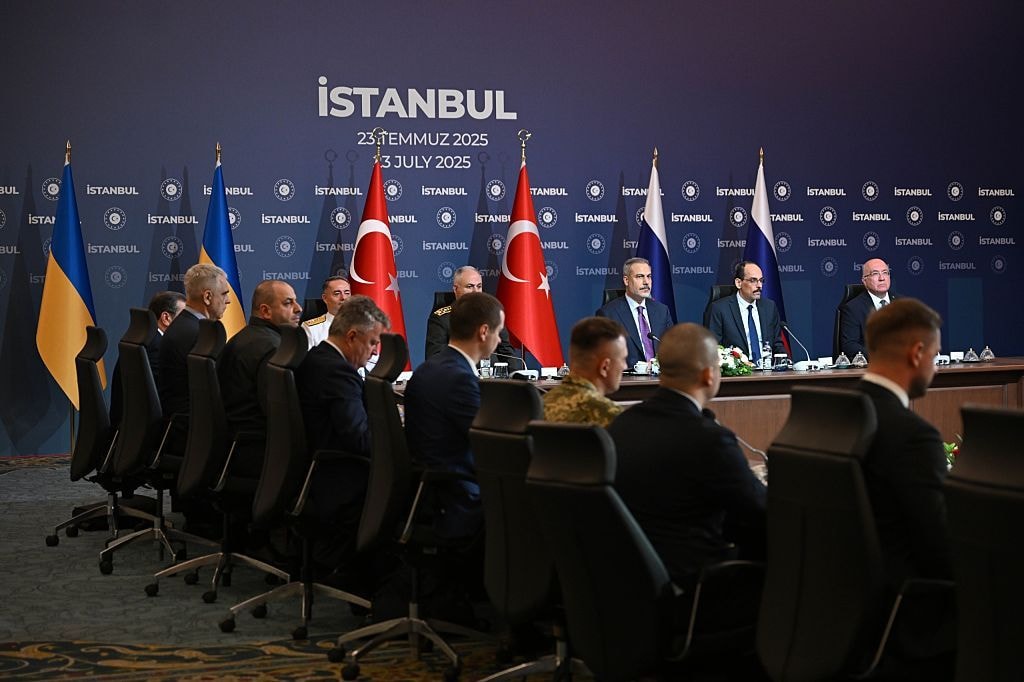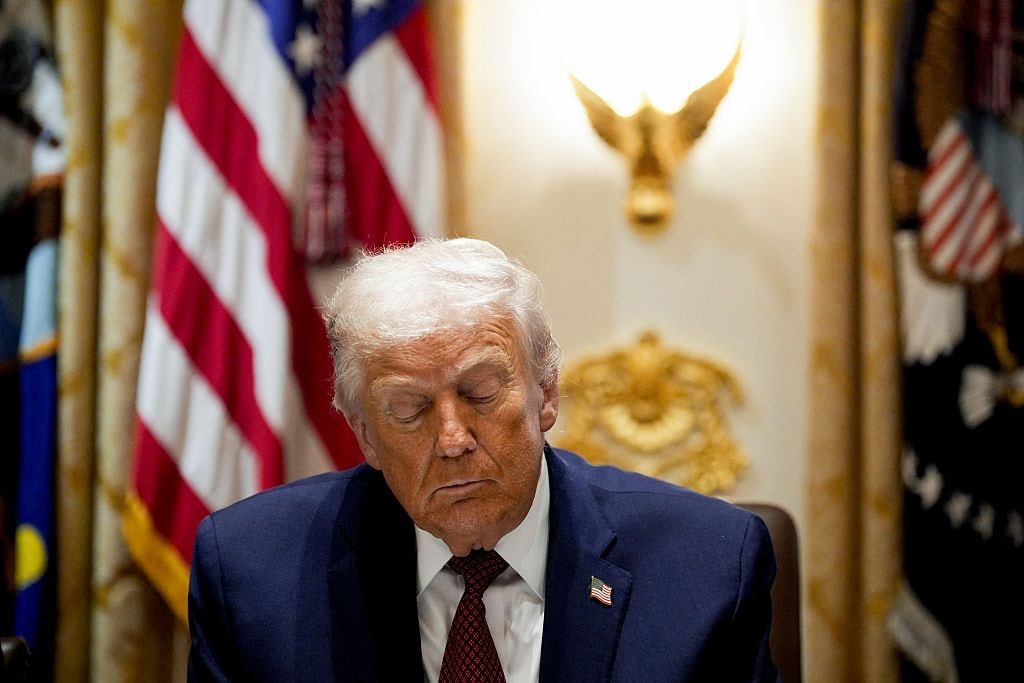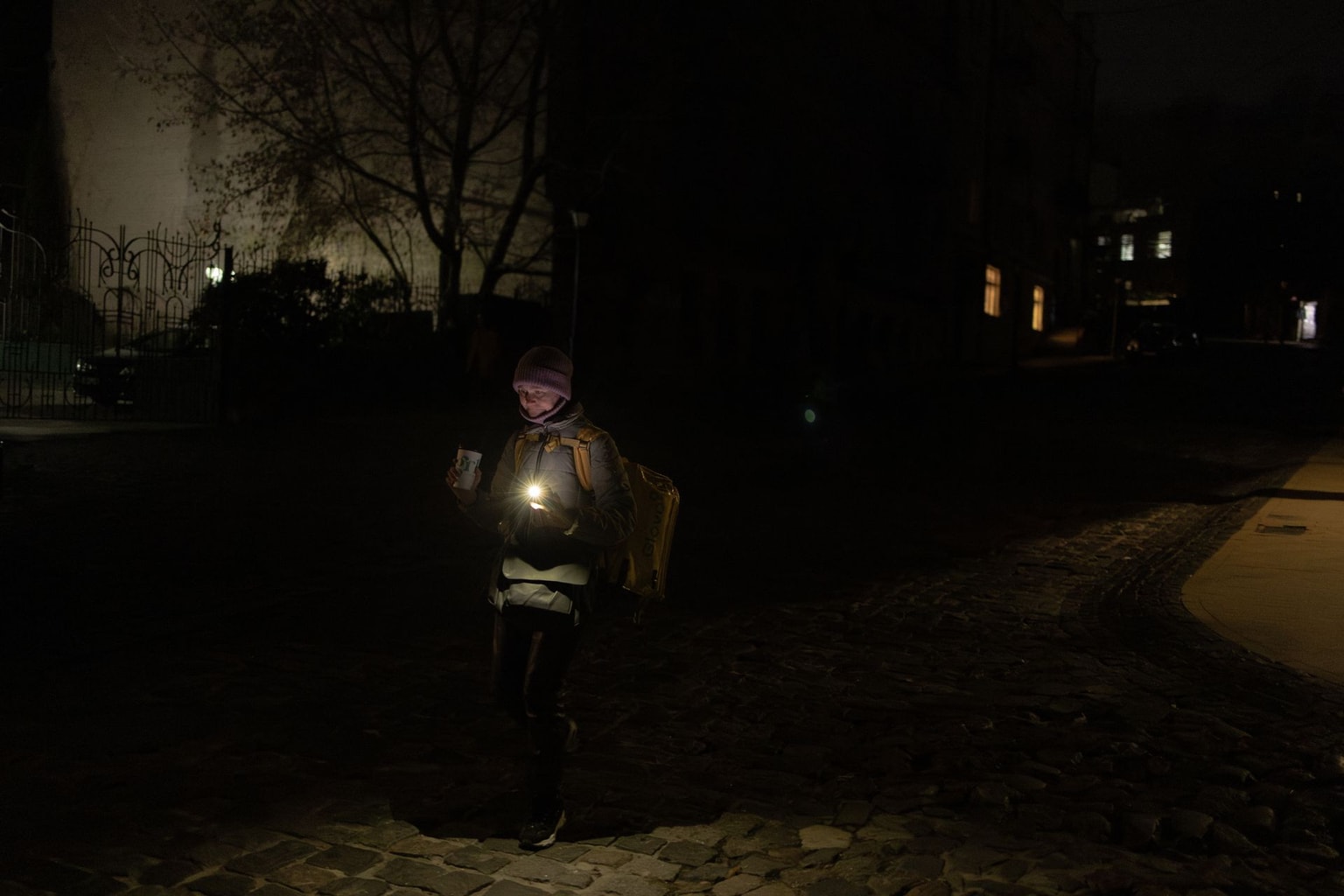
The Counteroffensive: Can Ukraine's military survive without Elon Musk's Starlink systems?
Musk’s satellites keep Ukraine connected — but for how long, and at what cost?
Elon Musk, chief executive officer of Tesla Inc., in Washington, D.C., U.S. on March 24, 2025. (Samuel Corum / Sipa / Bloomberg via Getty Images)

After a busy day at work as a software engineer, Oleg Kutkov returns to his apartment in Kyiv. He steps out onto the balcony — but not to smoke or water the flowers. Oleg’s balcony is a workshop. There, he repairs Starlink terminals damaged at the front and sends them back to soldiers.
"At first, I used to work with Starlink as a hobby. But when I fix them now, I realize it's not just a hobby — it’s the main means of communication at the front," Oleg told the Counteroffensive.
Hundreds of thousands of people in Ukraine — including The Counteroffensive’s Kyiv office — depend on Starlink satellites, which have replaced internet networks damaged during the war. Civilians in hospitals, schools, and frontline areas all rely on it — as does the military along the entire front.
But U.S. President Donald Trump and Elon Musk see Starlink as leverage over the Ukrainian government. Starlink is part of Musk’s company, SpaceX, and although Ukraine and its partners pay for the system’s operation, Musk can theoretically shut it off at any time.
The centrality of Starlink to Ukraine’s military success underscores just how significant a geopolitical figure Musk has become — and how the world’s richest man now wields influence far beyond his net worth. The trajectory of the war, in many ways, lies in the hands of one person.
Ukrainian soldiers understand there are no full-fledged alternatives to Starlink, but they are prepared to fight without it — because they have no choice. That might mean relying more on traditional methods of communication, including radios and cellular networks. Satellite systems from other companies may help, but they’re less efficient and can’t fully cover the front.
Since childhood, Oleg, now 36, has enjoyed taking apart and reassembling electronics. So when he learned about Starlink in 2021, it immediately piqued his interest.
He ordered his first terminal from the United States in late 2021 — before Starlink service was even available in Ukraine. His goal was to disassemble the terminal and see how it worked. He believes his was likely the first Starlink terminal in the country.
A few months later, Russia launched its full-scale invasion of Ukraine. In late February 2022, Ukraine asked Musk to activate Starlink access. Russia was targeting communication towers and knocking out access to traditional systems. Musk — who can both give and take away — responded within hours. He announced that Starlink service was active in Ukraine and that the first terminals were on their way.
“I know Starlink is not reliable — SpaceX has already shut it down several times. But currently, there are no full-fledged alternatives.”
Oleg saw Musk’s tweet and decided to try activating his terminal. With help from his SpaceX contacts, it worked. He believes it was one of the first active Starlink terminals in Ukraine.
“It allowed me to at least somehow stay in touch and get some news,” Oleg said of his experience in Kyiv at the beginning of the invasion. “Where there was no connection due to Russian attacks, it appeared thanks to Starlink.”
While Musk supported Ukraine early in the war, he later started to undermine the Ukrainian military's operations.
In September 2023, biographer Walter Isaacson claimed Musk had secretly disabled Starlink service near occupied Crimea the previous year to disrupt a Ukrainian attack on the Russian fleet. The story was later confirmed by Kyrylo Budanov, head of Ukraine’s military intelligence.
In February 2023, SpaceX restricted Starlink’s use in Ukraine — specifically limiting its role in drone operations. Musk said the decision was made “to prevent World War III.” The restrictions were eventually lifted.
More recently, threats to shut down Starlink surfaced again when Trump returned to the presidency. According to Reuters, Trump administration officials warned Ukraine they would cut off Starlink access unless Ukraine agreed to a mining deal. The deal remains unsigned.

Musk also clashed with Polish Foreign Minister Radosław Sikorski over Starlink. Although Musk later tweeted that he would never cut access, there is lingering skepticism about whether his word can be trusted.
Ukraine remains vulnerable to the possibility that Musk could pull the plug on Starlink at any time. As a result, the government is seeking alternatives.
“I know Starlink is not reliable — SpaceX has already shut it down several times. But currently, there are no full-fledged alternatives. All other options are worse,” Oleg said.
With Starlink, Ukraine’s military can coordinate operations, transmit front-line data, and monitor the battlefield — even when there’s no mobile network coverage. It also enables drone reconnaissance and precision strikes.
“Communication (via Starlink) is the basis of command and control,” said Yaroslav Honchar, head of the nonprofit Aerorozvidka, which promotes robotic military technology. “If there is communication, then there is control, and then can we talk about offense, defense, and everything else.”
Although Starlink isn’t officially available to the Russian army, reports suggest some Russian units have used it anyway.
Still, the system has its flaws. Starlink terminals aren’t designed for long-term use under battlefield conditions. They often break under extreme weather or combat stress. The most common issue Oleg sees is shrapnel damage. But he also fixes terminals that have been flooded in trenches, chewed by rodents, or tossed from moving vehicles.
“There was a case when I drained 5 liters of water from two new terminals. I dried them out, repaired them, and they started working,” Oleg said.
Ukraine’s growing interest in alternatives is driven by a desire to reduce its dependence on Musk. According to the Financial Times, the European Union is currently in talks with four companies to possibly replace Starlink for Ukraine’s armed forces: SES (Luxembourg), Hisdesat (Spain), Viasat (United Kingdom), and Eutelsat/OneWeb (France).
The first three rely on older satellite technology, with satellites orbiting around 30,000 kilometers above Earth — compared to Starlink’s 500 to 800 kilometers. This affects latency and data speed.
Eutelsat/OneWeb’s satellites are closer, orbiting around 1,200 kilometers, and are more comparable to Starlink in coverage. But the size of their network is limited — just 500 to 600 satellites versus Starlink’s more than 6,000.
Other alternatives are more rudimentary. During the Battle of Kursk, Ukrainian forces used radio and wired communications, since Starlink doesn’t work in Russia.
“We can successfully defend the country without Starlink. We did it at the very beginning of the full-scale invasion, and we can do it now," said Volodymyr Stepanets of the Narodnyi Starlink initiative, which repairs and supplies terminals. "It is more difficult, more expensive... but it is possible."
Stepanets also argues that cutting off Ukraine would hurt Musk, too. He said more than 150,000 Starlink terminals are currently in Ukraine, generating roughly $15 million per month in subscription fees.
“As a country, we are Musk's largest customer on this continent. Probably, the number of Starlink terminals in Ukraine is higher than in the whole of Europe,” he said.
The Counteroffensive contacted the Ministry of Digital Transformation and Starlink’s Ukraine office to confirm the number of terminals in use. As of publication, neither had responded.
Oleg has worked on Starlink Gen 2 terminals, which he says have a vulnerability in field use. One connector used to link the equipment is prone to moisture intrusion and often fails. To fix the issue, Oleg substituted a connector from a different company that was more water-resistant. After testing it, he recorded a video tutorial to help others do the same.
Like many Ukrainians, he adapted. He improvised. He taught others how to make do—and how to make things better. Under pressure, Ukraine’s creativity shines. And it will continue to shine, even if Elon Musk turns off the lights.
Editor’s Note: This article was published by the twice-weekly newsletter “The Counteroffensive with Tim Mak” on April 9, 2025, and has been re-published by the Kyiv Independent with permission. To subscribe to The Counteroffensive, click here. The opinions expressed in the op-ed section are those of the authors and do not necessarily reflect the views of the Kyiv Independent.










